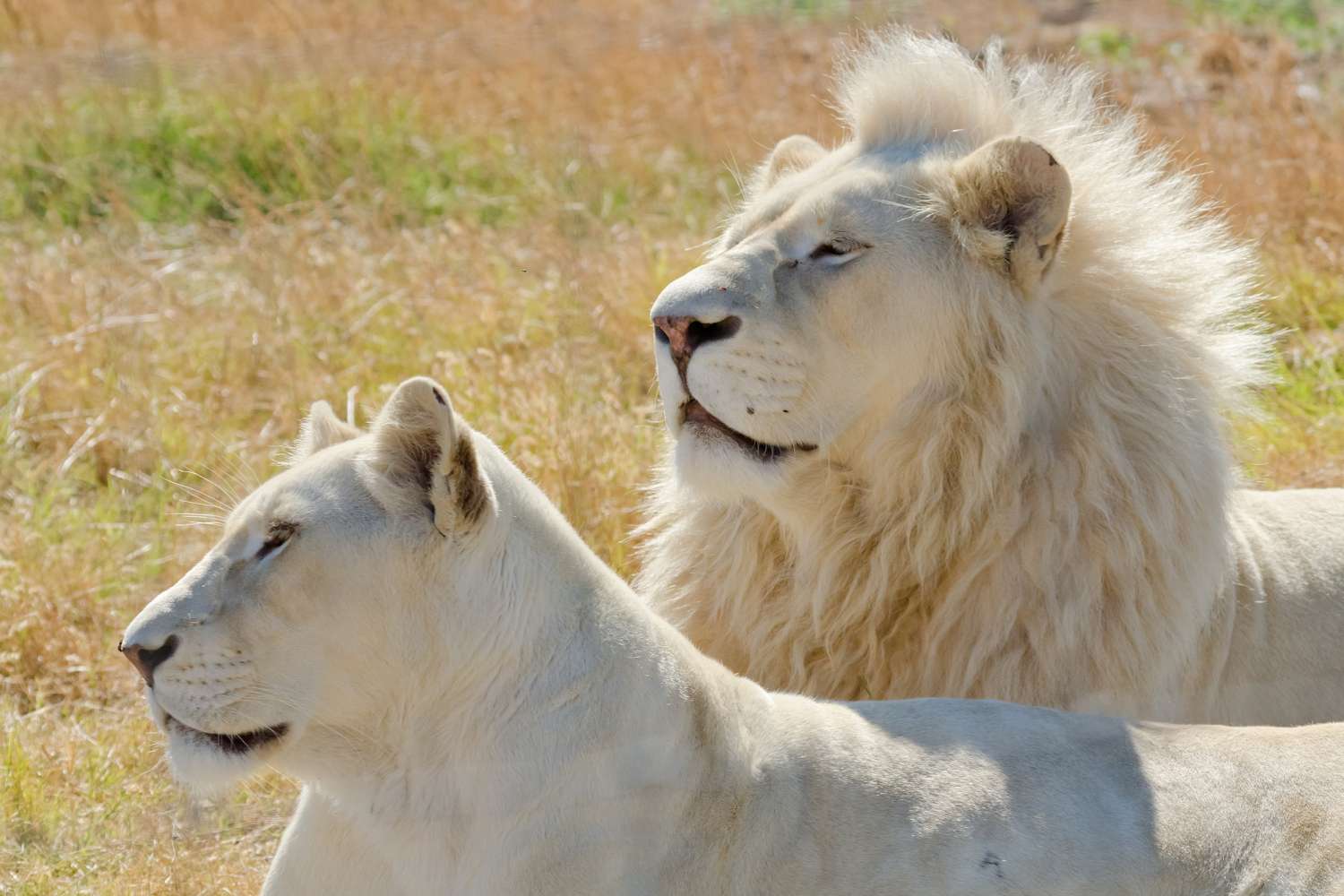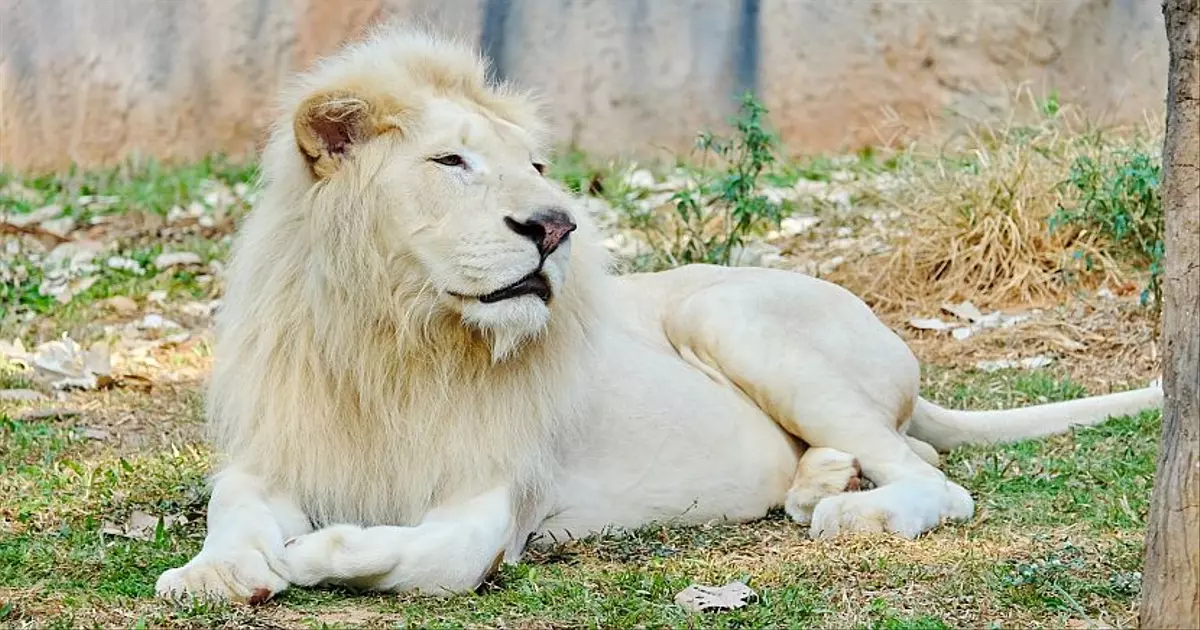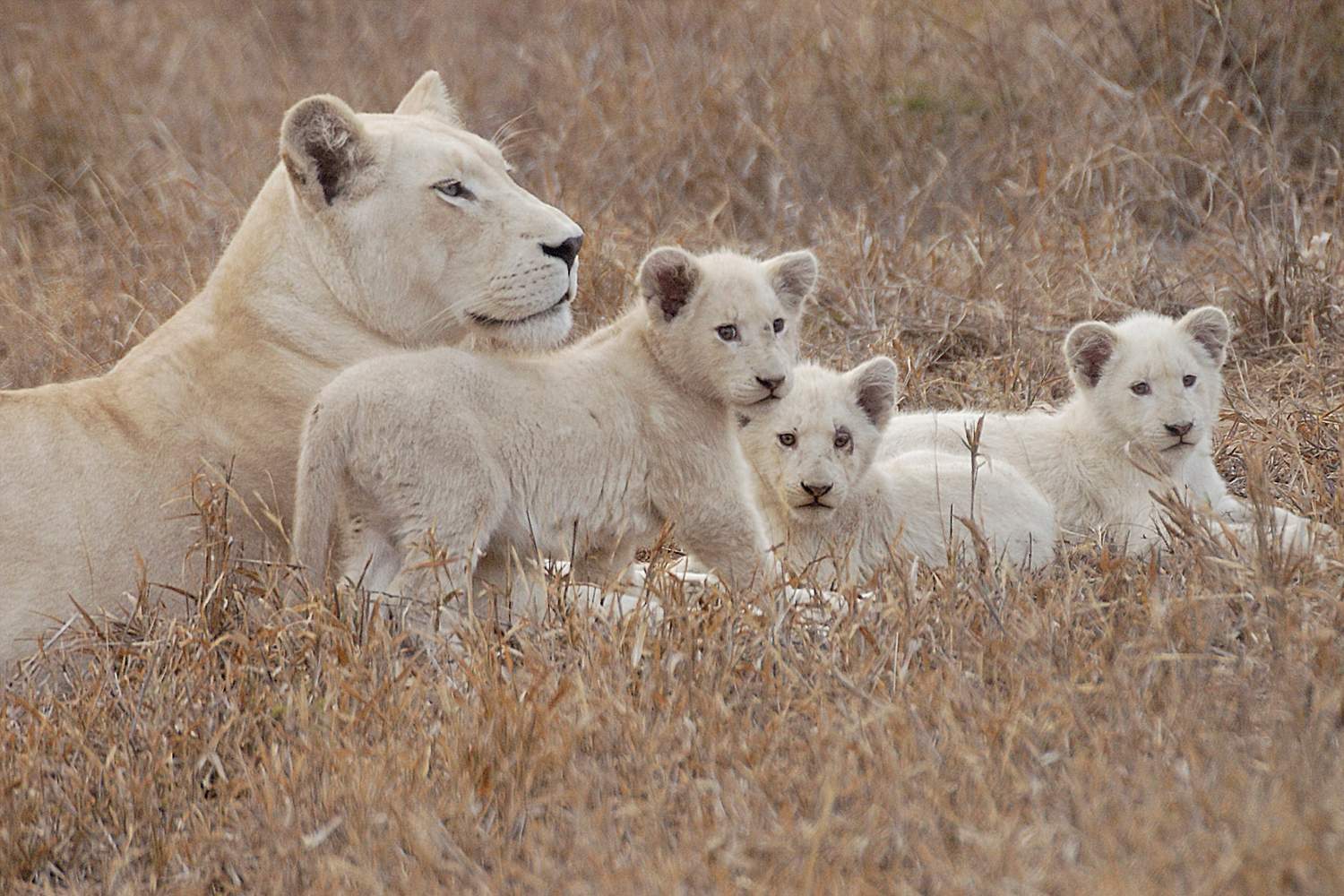| THE TOPICS |
THE INFO |
| White Lion Cubs |
- White lion cubs possess a unique white or creamy fur coloration.
- This distinct coloring is attributed to a recessive gene that inhibits pigment production.
- Initially nursed by their mother, they transition to solid food, mainly consisting of meat like wildebeest, zebra, and antelope.
- Playful, curious, and dependent on their mothers for protection and care.
- They learn essential hunting and survival skills from the pride as they grow older.
|
| Genetics |
- White lions inherit their unique white fur coloration from a recessive gene that inhibits pigment production.
- This genetic mutation is rare and occurs naturally in the wild lion population.
- Breeding programs often focus on preserving and studying the genetics of white lions to ensure their conservation.
|
| Habitat and Distribution |
- White lions are native to the Greater Timbavati region in South Africa.
- They inhabit various ecosystems including savannas, grasslands, and scrublands.
- Habitat loss due to human encroachment and fragmentation poses a significant threat to their survival.
|
| Behavior and Social Structure |
- White lions exhibit similar behavior and social structure to other lion subspecies.
- They live in prides consisting of related females and their offspring, led by a dominant male.
- Hunting, territory defense, and social bonding are essential aspects of their behavior.
|
| Cultural and Symbolic Significance |
- White lions hold cultural and symbolic significance in various societies, often revered as symbols of strength, courage, and divine power.
- They feature in myths, legends, and spiritual beliefs, representing purity, wisdom, and leadership.
- Conservationists and activists leverage their symbolic value to raise awareness about wildlife conservation and habitat preservation.
|
| Tourism and Ecotourism |
- White lions attract significant interest from tourists and wildlife enthusiasts, contributing to ecotourism initiatives in their native habitat.
- Conservation reserves and wildlife parks offer guided tours and educational programs focused on white lion conservation.
- Responsible tourism practices aim to minimize disturbance to white lion populations and support their conservation efforts.
|
| Conservation Status |
- White lions are classified as critically endangered in the wild.
- Threats such as habitat loss, human-wildlife conflict, and poaching contribute to their decline.
- Conservation efforts include habitat preservation, anti-poaching initiatives, and captive breeding programs.
|
| Roar of the Lion |
|


